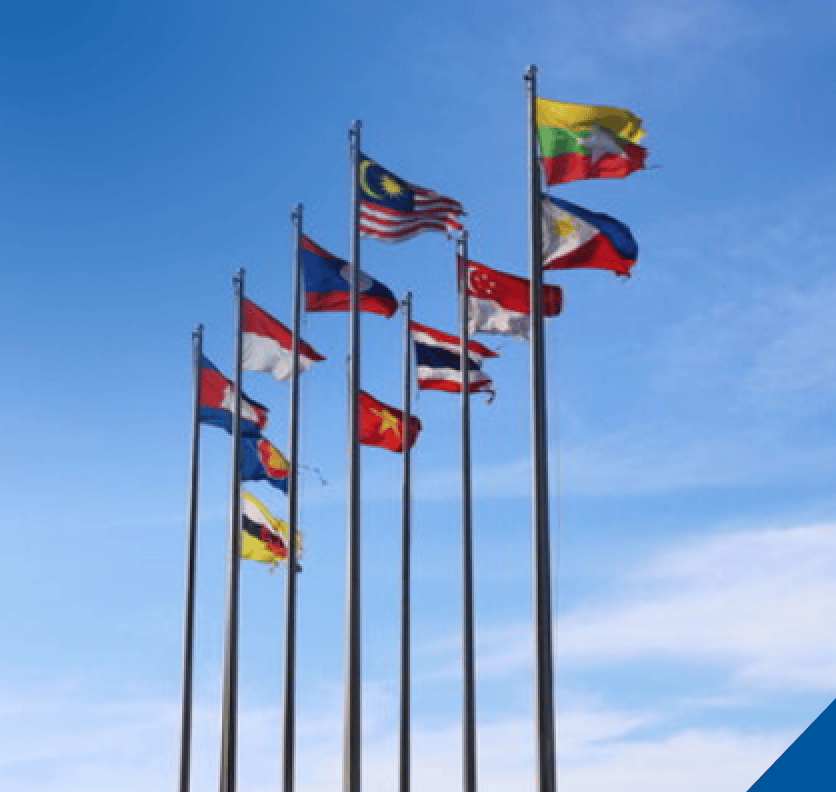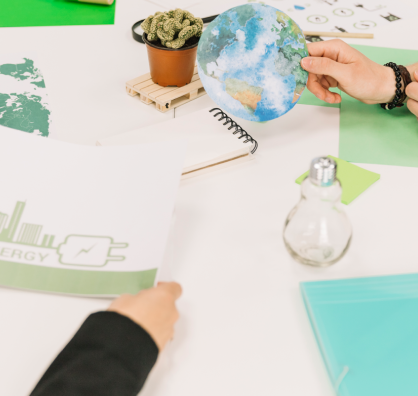[vc_row][vc_column][vc_column_text]i[/vc_column_text][/vc_column][/vc_row][vc_row css=”.vc_custom_1565542682041{margin-right: 0px !important;margin-left: 0px !important;}”][vc_column css=”.vc_custom_1565542696462{padding-right: 0px !important;padding-left: 0px !important;}”][/vc_column][/vc_row][vc_row css=”.vc_custom_1565542751414{margin-right: 0px !important;margin-left: 0px !important;}”][vc_column width=”1/4″][/vc_column][vc_column width=”1/2″ css=”.vc_custom_1565622195563{padding-bottom: 50px !important;}”][vc_column_text el_class=”title-event”][post_title][/vc_column_text][vc_column_text el_class=”text-par-news”][/vc_column_text][vc_column_text el_class=”date-venue-news”]Bergen, 9-11 November 2023 [/vc_column_text][vc_column_text el_class=”text-par-news”]9 November 2023
After spending two exciting days in Oslo, ACCEPT II Team and ASEAN Member States’ representatives continued the trip towards Bergen to gain more insights on climate-related technology. The trip began with a breath-taking train ride from Oslo to Myrdal on the Bergen Railway. The Bergen Railway is a 371 km long scenic standard gauge railway line between Bergen and Hønefoss, Norway. After arriving in Myrdal, the team continued to take another train to start the Myrdal – Flam journey. This trail also showed amazing scenery view of fjord and mountains and took about 8-hours before arriving at Flamsbana. The Flåm Railway has been described as one of the most beautiful train journeys in the world and is one of the leading tourist attractions in Norway. The journey features the finest aspects of the stunning scenery of Western Norway.
After a long train trip, the team continued onboard a vessel to the magnificent Aurlandsfjord and on the narrow Nærøyfjord. They boarded the Vison, an environmentally friendly, hybrid vessel and the Future which is a fully electric vessel. Both vessels sail along the most exposed and spectacular parts of the Nærøyfjord, running solely on battery power and keeping to a speed of less than 10 knots. After the 2–hour boat ride, the ACCEPT II Team and the ASEAN Member States’ representatives finally arrived in Gudvangen to have dinner.
On the next day, the net zero journey started by visiting Frøland Hydro Power Plant. Frøland power plant is one of the first large power plants in Western Norway when hydropower production started in 1912. The power plant generates approximately 152 GWh electricity per year which is then distributed to 9,500 households in the municipality. The power plant’s operating tunnel is almost 4 kilometers long, starting from Fiskevatnet which later leads into a pipe street down to Frøland power plant. During the visit, ASEAN Member States’ representatives were introduced to the oldest generator built in 1912. The manager of operations explained the history of building the underwater tunnel up to its utilization until now. He also touched on the operation and maintenance activities where the team has monthly checks and annual comprehensive maintenance. [/vc_column_text][vc_single_image image=”20653″ img_size=”full” alignment=”center”][vc_column_text el_class=”photo-caption-news”]
Photo 1. Group Photo at Froland Hydropower Plant
[/vc_column_text][vc_column_text el_class=”text-par-news”]Midtfjellet Windfarm served as the second destination after the insightful tour around Frøland Hydro Power Plant. This windfarm which is located in Vestlan is the largest onshore windfarm in Norway. It houses the very latest in wind turbine technology where turbines are placed closely together. In total, 55 turbines are placed in one area to produce environmentally friendly electricity. The power plant has an annual production of 433.7 GWh from three different types of wind turbines. The first type is N90 with 2.5 MW power generation which has been placed on 34 wind turbines. The second type, N100 generates the same power with larger rotor diameter. The third type, planted in 11 wind turbines is type N177 which generates 3.6 MW of electricity. The visit consists of 30 minutes presentation session and 1-hour small trip around the windfarm.[/vc_column_text][vc_column_text el_class=”text-par-news”]10 November 2023
The second day was divided into three site visits: Equinor, The Northern Lights CCS Projects, and CCB Energy Park. Equinor became the group’s first stop, and it is the leading supplier of energy to Europe and the largest oil and gas operator within the Norwegian Continental Shelf (NCS). The company focuses on responsible exploration, production, and development of oil and gas resources as well as renewable energy solutions. Equinor also one of the investors of the Northern Lights Project – Norway’s first license for CO2 storage within the Norwegian Continental Shelf. Together with Shell and TotalEnergies, Equinor believes that carbon capture and storage will play a major role in Norwegian climate solution. [/vc_column_text][vc_single_image image=”20654″ img_size=”full” alignment=”center”][vc_column_text el_class=”photo-caption-news”]
Photo 2. Company Visit to Equinor ASA, Norway
[/vc_column_text][vc_column_text el_class=”text-par-news”]After a short introduction about the Northern Lights project, the team directly headed to the site located in Stavanger. Northern Lights is the Norwegian Government’s full-scale carbon capture and storage project responsible for developing and operating CO2 transport and storage facilities, open to third parties, as part of the Longship project. It will be the first ever cross-border, open-source CO2 transport and storage infrastructure network and will offer companies across Europe the opportunity to store their CO2 safely and permanently underground. Phase one of the project will be operational in 2024 with a storage capacity of up to 1.5 million tonnes of CO2 per year. Specifically, the project covers the capture of CO2 at the Heidelberg Materials cement factory in Brevik and a waste-to-energy plant, Hafslund Oslo Celsio in Oslo. The transport of the captured CO2 combined with storage solution will be managed by Northern Lights JV DA.
The visit also included approaching the site and an introduction to the advanced technology that is being used by the company. The Longship includes capturing CO2 from industrial sources and shipping liquid CO2 from to an onshore terminal in the Norwegian West Coast. From there, the liquified CO2 is then transported by pipeline to an offshore storage location subsea in the North Sea, for permanent storage. In this project, Northern Lights is responsible for the transport and storage components. [/vc_column_text][vc_single_image image=”20656″ img_size=”full” alignment=”center”][vc_column_text el_class=”photo-caption-news”]
Photo 3. Site Visit to The Northen Light CCS Project off the coast of Norway
[/vc_column_text][vc_column_text el_class=”text-par-news”]The final site visit takes participants to the Energy Park, established by CCB Energy. The Park is located in Øygarden, an industrial-friendly municipality in Vestland country. This site serves as the working foundation to achieving Norway’s climate goals through sustainable business areas. In its relevancies to the CCS plant, the presence of this park will allow industrial actors to deposit their CO2 with the lowest possible carbon footprint. Through the establishment of CCS and the hydrogen production plant, vast opportunities will emerge. Those in need of depositing CO2 or in demand for H2 or heat waste will benefit greatly with the existence of the Energy Park.
A mere one–hour drive away from the Energy Park, participants were led to the CCB Energy office, inside their auditorium where the staff explained the Energy Park project in more detail. They shared that the Energy Park included several different activities such as climate-neutral hydrogen production, marine farming and reception, as well as disposal and storage of CO2. Moreover, the site provides access to several energy resources such as natural gas in pipelines, liquefied natural gas, and waste heat.
In summary, the study tour aims to introduce ASEAN representatives to the climate-energy nexus technology, research, and its opportunities to be implemented in ASEAN countries within the next few years. The activities also provide opportunities for networking between ASEAN-Norway to strengthen the regional cooperation as well as unlocking new chances for ASEAN to become more climate friendly. [/vc_column_text][vc_column_text el_class=”text-par-news”]Detailed information on ACCEPT II can be found at https://accept.aseanenergy.org/
We welcome any future collaboration, please feel free to contact us at [email protected][/vc_column_text][/vc_column][vc_column width=”1/4″][/vc_column][/vc_row]











